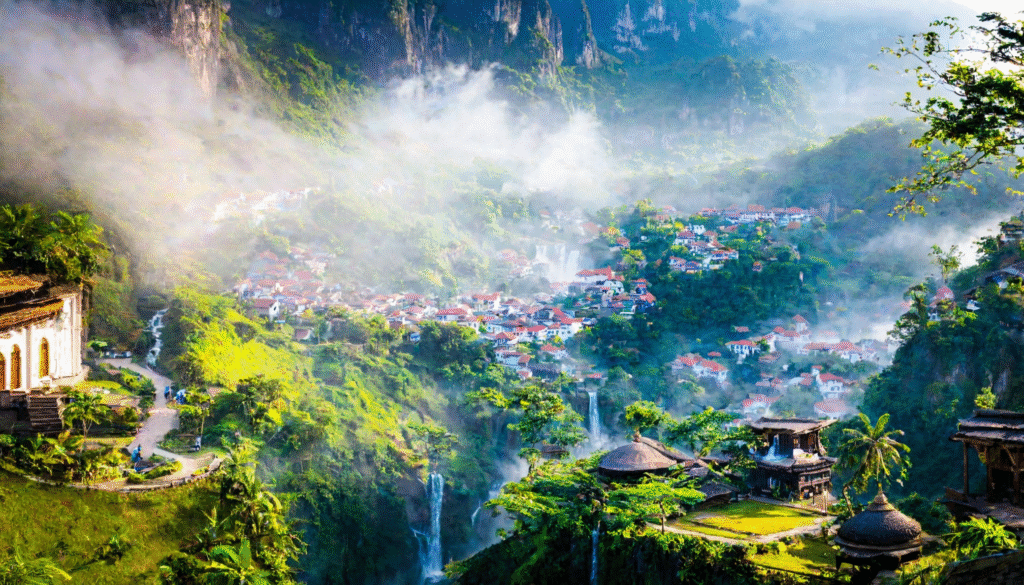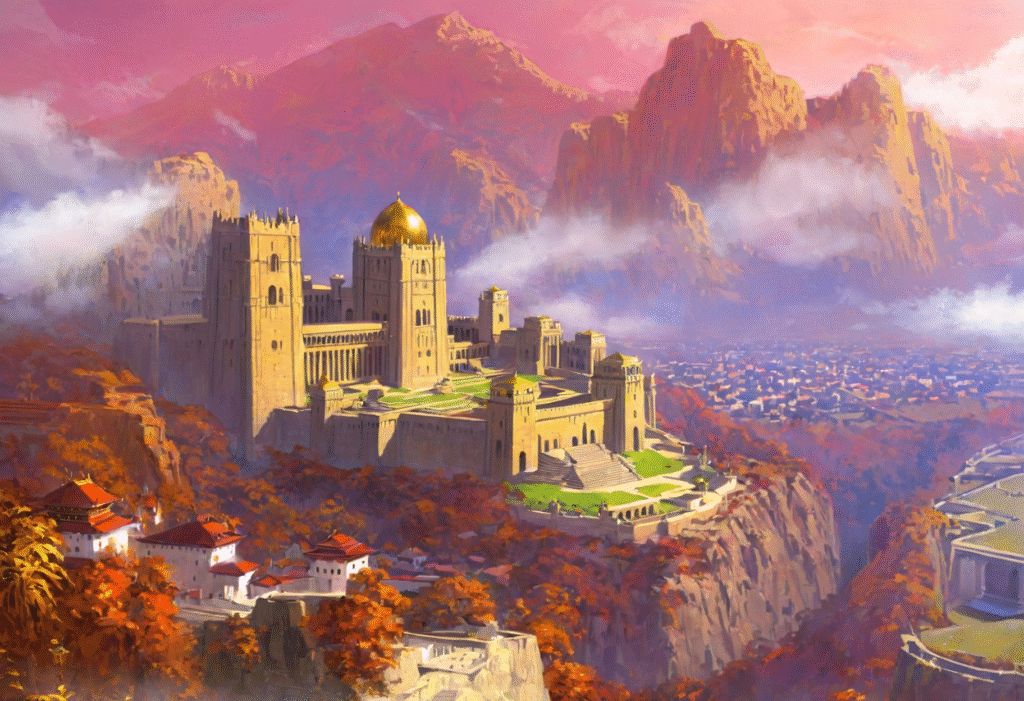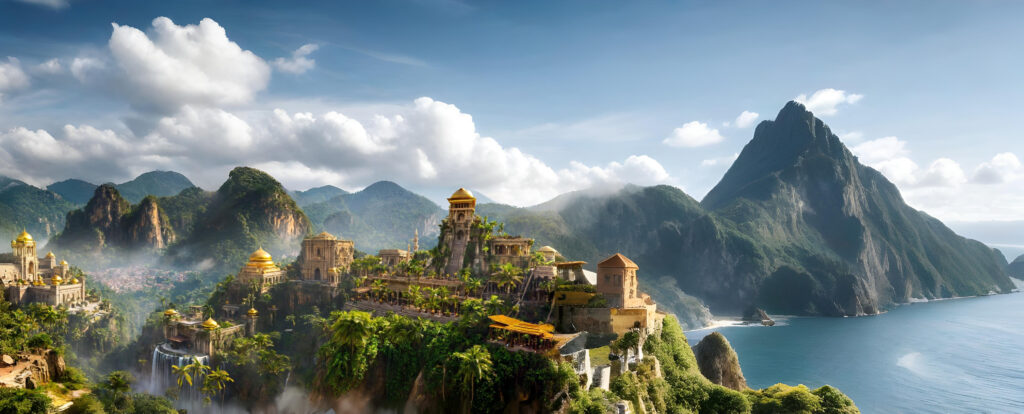
What is called Elder Ruselon in the modern tongue was not always one city. In ages long past, five separate settlements rose upon the terraces and valleys of the Konara mountains, each claiming its own plateau or basin, each thriving in its own trade or sanctity. Time, commerce, conquest, and cataclysm wore away their walls and distinctions, until one by one they joined, converging into the single greatest hub of civilization the world has ever known. To understand Ruselon, one must first understand its five ancestral hearts.
Jeros, the City of Gardens (Nima Plateau)

Jeros was the oldest, perched high on the Nima plateau. Known for its wealthy estates, healing shrines, fertility temples, and vast pleasure gardens, it was a place of abundance and ritual. Merchants came to Jeros not to haggle but to heal, to bless their caravans, to leave offerings for fertility. Small businesses thrived on luxury standards, crafting ornaments, oils, and delicacies. Even now, the Jeros district of Ruselon is remembered for its refined air—perfumed courtyards, healing baths, and lush terraces where Ornamented Mares parade as living symbols of continuity.
Yandia, the City of Records (Zharam Plateau)

Across the Zharam plateau stood Yandia, a city of markets and memory. Its broad avenues hosted libraries, archives, and banks. Yandia’s markets were famed not only for trade but for knowledge, as scribes, scholars, and money-lenders made it a crossroads of learning and finance. The great Temple of the Sun dominated its skyline, its golden spires blazing at dawn. Yandia also held Ruselon’s first Red Lantern District—its brothels as refined as its banks, its courtesans trained as archivists of pleasure and law alike. Today, Yandia’s legacy lives in Ruselon’s red lantern terraces, its great libraries, and the guild archives that guard both coin and contract.
Teltos, the Lower City (Varahya Plateau)

Teltos sprawled across the Varahya plateau, sloping downward into the basin where temperate jungles pressed against the stone. Here dwelled the common folk—the peasants, the artisans, the mule-handlers and caravan drovers.
Teltos was the city of sweat and earth, feeding the others with its markets and labor. It was said that in Teltos one could hear the pulse of the real Ruselon, the voice of the masses who kept silk flowing, silver mined, and caravans fed. Today, the Teltos quarter remains the Lower City, a place of dense dwellings, jungle markets, and rough vitality, where mercenaries find employment and peasants pray to the same fertility idols as lords above.
Ruselon, the Elder City (Elder Plateau)

At the highest elevation rose Ruselon proper, the namesake city, built upon the Elder plateau. This was the city of law and commerce, where contracts were carved, guild charters signed, and judgments passed in the towers of authority. The palaces of equine lords crowned this plateau, their domes and terraces gleaming above all others. Ruselon was the heart of governance, the place from which order radiated outward to bind Jeros, Yandia, and Teltos together. When the names converged, it was the Elder Plateau’s city that lent its name to the whole, so that even now, Elder Ruselon echoes the supremacy of this original seat of law.
Ibadda, the City of Passage (Valley Crossroads)

The valley of Ibadda was the channel through which caravans passed to reach the others, and in time it became a city in its own right. Traders, pilgrims, and mercenaries lodged there, feeding an economy of passage. Ibadda was the “fourth city,” the crossroads, where strangers first became part of Ruselon’s tapestry. Its markets were filled with foreign wares, its temples syncretic, its inns rowdy. Though swallowed by the larger metropolis, Ibadda remains the gateway, the valley that all must cross to enter the true body of Ruselon.
The Convergence

Over centuries, the five cities lost their borders, growing together until they were one. Trade bound them. Fertility cults bound them. Wars and cataclysms broke their walls and forced them into union. The rivers and waterfalls cut paths between them, and bridges and aqueducts sealed them together. What was once five now became one—the Pentapolis of Civilization, the city so massive and layered that no foreigner could chart it whole.
Thus Elder Ruselon today is not simply a metropolis but a continent in miniature. To walk its districts is to pass through Jeros’ perfumed gardens, Yandia’s libraries and red lanterns, Teltos’ peasant markets, Ruselon’s palaces of law, and Ibadda’s caravan crossways—all without ever leaving the city.
It is for this reason that Elder Ruselon is called not merely the City of Silver and Silk, but the Hub of Civilization itself. For within its terraces, the abundance of five ancient cities flows together, and from its balconies, Ornamented Mares flaunt the wealth and fertility of every age.
